前回の記事の引き続きですが、今回はwhichとthatの使い分けについてもっと詳しく説明します。「That」や「which」などの関係代名詞は関係節を名詞に付ける機能があります。「That」や「which」は言葉の糊というふうに考えれば役立つと思います。「That」は強力接着剤というsuperglueで、「which」はもっと弱いスティック糊です。つまり両方とも言葉に節をくっつける言葉だけど、thatはよりべったりとくっつける言葉です。前回は、thatに続く関係節はいつも先行詞を定義しているけど、「which」に続く関係節は先行詞を定義することもあれば、しないこともあるという話をしました。
さて、「that」 の superglueのイメージに注目してください。「That」に続く関係節は文章の意味を理解する上で、とても大事なのです。もし、この節を消したら、文章の意味はガラッと変わってしまいます。つまり、thatの関係節を剥ぎ取ったら、先行詞へも文章へも取り返しのつかない損害を与えてしまいます。Hmm、糊のイメージは言い過ぎたかもしれません。 じゃあ、次の例文を見てみましょう。
Cars that are fast sell very well.
速い車はよく売れる。
この文章には、thatに続く「are fast」という節がないと、文章の意味はガラッと変わってしまいます。ですので、関係節の重要性を強調したい時には、「that」を使ったほうがいいです。 一方で、Cars, which are fast, sell very well. という文章は「車という速い乗り物はよく売れる。」という意味があって、もし「which are fast」を取り消しても、文章の意味はあまり変わりません。
それでは、以上の話と繋がる複雑な文法を教えたいと思います。 先行詞の前に置く形容詞の種類によって、先行詞の後に付けられた関係節は先行詞を定義すべきという場合があります。この形容詞と先行詞の組み合わせには2つの種類があります。
1.不定形容詞に続く先行詞
2.最上級形容詞や序数に続く先行詞
これらの先行詞に「which」ではなくて、「that」を付けます。
この説明は分かりにくいと思うので、もっと具体的に教えます。 不定形容詞はall, any, every, few, little, many, much, no, someなどが含まれます。 通常不定形容詞に続く名詞は一般的な主語で使われています。
例えば
Most computers are unreliable.
ほとんどのパソコンは信頼できません。
All cats like milk.
全ての猫は牛乳が好きです。
でも、不定形容詞に続く名詞に関係節を付けると、限定された一般的じゃない主語になります。
つまり、主語の意味がガラッと変わります。ですので、「which」ではなくて、「that」を使わないといけません。
Many books that were written 10 years ago are no longer relevant today.
10年前に書かれた本の多くはもう今の時代にそぐわないものです。
No houses that were made of wood survived the fire.
木材で作られた家はどれも火災を免れていません。
明らかに、以上の関係節は文章の意味上必要があります。
最上級形容詞と序数は不定形容詞の時と同じように、付けられた関係節はいつも先行詞を限定しているし、
定義しているので、「which」ではなくて、「that」が必要なのです。
The first meal that I ate in Japan was soba and rice.
日本で初めて食べた食事は蕎麦と御飯でした。
You are the greatest guy that I have ever met.
君は僕が会った人の中で一番いいやつだよ。
最後に、特定すべき動詞の後に、「which」ではなくて「that」を付けます。
でも、特定すべき動詞とは一体どういうことなんでしょう? Say, hope, think, declare, write, believe, insist などが特定すべき動詞です。
つまり、これらの動詞の後には、通常、特定している節を付けます。何も付けないと、このような動詞は文法的に正しくありません。
しかも、全く意味がありません。例えば、日本語と違って、ただ、「I said」や「She thinks」と英語で言っても、 誰にも意味が通じません。
もし、ネイティブが突然「I said」と叫んだら、回りの人はビックリして、「What did you say?」とすぐに聞きます。
ですから、次のような例文が正しいのです。 「I said that I wanted to go home.」「She thinks that she likes him.」
これらの動詞の後には、whichを使えません。そして、thatか前置詞を付けます。(今日は前置詞の話はしません。)
I believe that she knows the answer.
私は彼女が答えを知っていることを信じているよ
I insist that you tell me.
僕に教えなさい!
I wrote that I loved her fifty times.
あなたが大好きだと50回書いた。
注意:I insist! I believe! という動詞はたまに関係節なしで使われています。
注意:今回の話題は「that」と「which」の使い分けについてです。でも、以上の文章では、必ずしも「that」を付けなくてもいいです。特に口語英語では、関係代名詞を省略してもいい文章がよくあります。その話題についての記事をまた別の日に書きます。

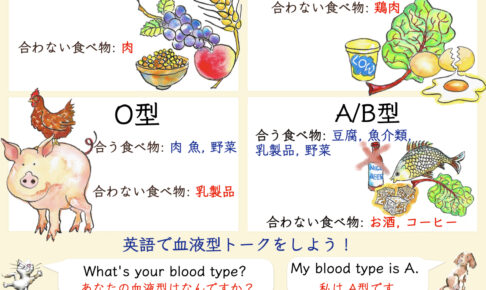
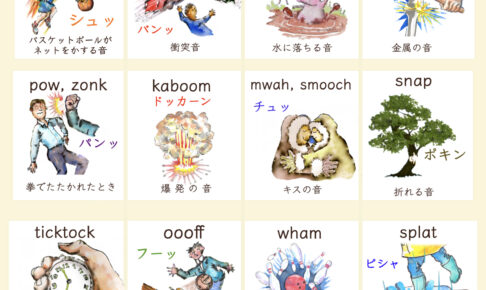
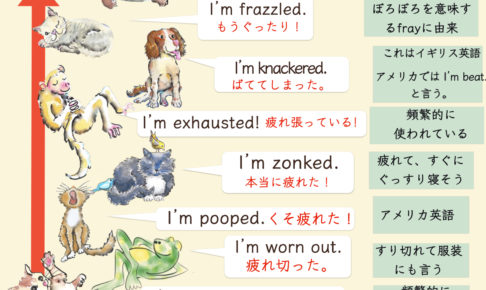
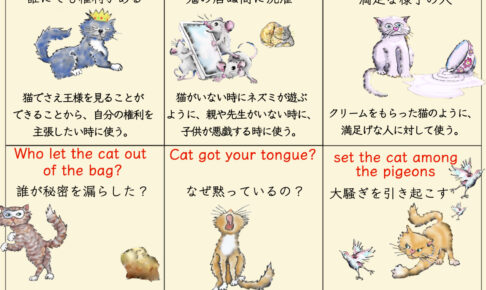





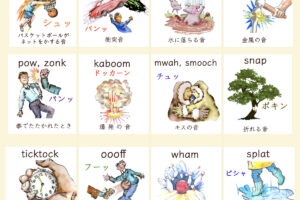
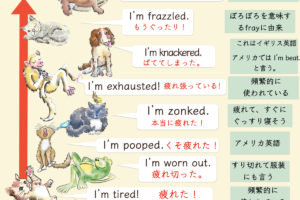

[…] 「that」の使い方「which」と「that」の使い分け thatとwhichとwhoの違い […]
[…] 「that」の使い方「which」と「that」の使い分け thatとwhichとwhoの違い […]
LIKE 先生、日本人にとって関係代名詞・関係副詞の文を作るのは簡単ではありません。 それと動名詞 (Gerund 、動詞の現在分詞形..ing 、または動詞の過去分詞形)の入った文に出くわすとどうやって和訳すればいいのか分かりません。ボクは動名詞の入った文を作るのがとても苦手です。なにかいい対策を教えてください。
That’s a tricky question. It seems like much of the time Japanese clauses and English clauses are the opposite of each other. When you are trying to translate English into Japanese, trying to rearrange the English so that the explanatory clause comes before the noun might be helpful. Other than that, I can’t really think of any 対策 that might be of help to you. If I do, I will let you know.
Luke
thatは内容を限定する時に使う関係詞、という説明はとてもよくわかりました。thatが元々は指示代名詞であることを考えると納得です!
最後の「特定すべき動詞の後のthat」に関しては、日本の学校文法では、これは「関係詞」ではなくて名詞節を導く「接続詞」だと習うので、日本人がwhichと混同する心配はないと思います:-)
それから、この欄に書いて良いのかわかりませんが、前置詞に関して一つ質問して宜しいでしょうか?前置詞のinなのですが、私は、時間的にも空間的にも「中」というイメージを持っています。その為、「3時間後に」などと言う時、in three hoursと、inを使うのが何となく腑に落ちません。in three hoursと聞くと、「3時間以内に」と考えたくなってしまいますが、「3時間以内に」と言う時はwithin three hoursと言うのですよね?どうして「~後」がin ~になるのでしょう?
Hi Nina,
Hi Nina,
Thanks very much for your comment. I’m glad you found the explanation of “that” and “which” helpful. That’s an excellent question abou the use of “in”. You are right that “in” usually indicates something that is inside of something else, whether it be physically or temporaily, such as “in the month of January.” However, as you say, “in three hours” doesn’t carry that meaning and instead means “after three hours.” I am afraid I don’t know why this should be. “In” also can be used to specify something, such as “you are very good in English”, so perhaps in this case it would be useful to think of “in” as meaning “in regards to”. So if you say “I will meet you in three hours”, you could think of the “in” here as referring not so much to the temporal “in” but rather to the “in” which means “in regards to”. I am afraid that this is the best I can come up with at the moment.
Luke
すごい!
ありがとうございます!初めて理解できた気がします!
もっともっと覚えるぞーっ♪
[…] 「that」の使い方「which」と「that」の使い分け thatには非制限用法が無いのに対して、 whichやwhoには制限用法がある […]
Hi Luke,
your explanations about the following 2 sentences in Japanese can be described to my comrehension below:
For example,
・car No.1 is fast.
・car No.2 is Not fast.
・car No.3 is fast.
( Reason:)
Because,we compared its performance on every car.
(In this case:)
No.1 and No.3 sell very well,whereas No.2 is Not sell very well.
↓
We can say,”Cars That are fast sell very well.”
Meanwhile,
・ car No.1 is fast.
・ car No.2 is fast.
・ car No.3 is fast.
( Reason:)
Because,every cars are faster than bicycle.
Car No.1 to car No.3 sell very well because car is fast generally.
↓
“Cars , Which are fast, sell very well.”
Then,we can also say:
(Yes○) ” Most cars That are Not fast don’t sell very well.”
・particular performance → ・use ” that… ”
(No×) ” Most cars,which are Not fast,don’t sell very well. ”
* ” Not fast ” is not general ( or ” whole ” ) performance.
So,we don’t use ” ,which.., ” but ” that..”.
・general performance → use ” ,which…., ”
Moreover,
(Yes○) : “The fastest car that we sell is car No.1.”
* We desctibe about particular one among other cars.
(No×) :”The fastest car,which we sell,is car No.1.”
* We sell also not the fastest cars.
You didn’t describe the usage “preposition & which” here.
However,you described about “in” a little on your own comment.
So,let me describe “in which” a little.
I was thinking about this sentence:
” Paye is abbreviation for Pay As You Earn:
a system for collecting income tax In Which a person’s tax is taken off their pay by the employer and sent to the government ”
I focused on ” income tax In Which a person’s tax ” in the sentence.
I’ll give you examples for understanding the structure of the previous sentence.
Preposition “in” should be placement before ” which & relative clause” like 1. to 4. below:
1. That is the cupboard he put the cup in.
2. That is the cupboard that he put the cup in.
3. That is the cupboard which he put the cup in.
4. That is the cupboard in which he put the cup.
More example:
“This is the form which you need to fill in.”
↓
” This is the form in which you need to fill.”
Moreover,we must understand meaning of preposition,”in”:
” forming a part of something ”
(E.g.1)
・He is the lead singer IN a rock band.
(E.g.2)
・There are great aphorism IN this essay.
Have a look at the previous sentence again:
” income tax In Which a person’s tax ”
Then,there’s one more point for understanding:
・ income tax has types:
1. corporate income tax
2. personal income tax
So,I think structure of the sentence,” income tax In Which a person’s tax ” is like:
・” income tax In Which a person’s tax ”
↓
・” income tax Which a person’s tax In ”
↓
・” a person’s tax In income tax “